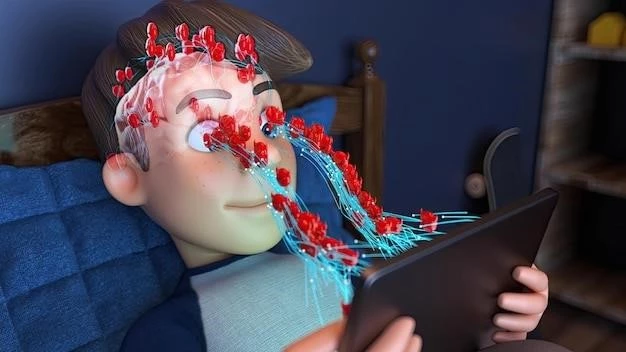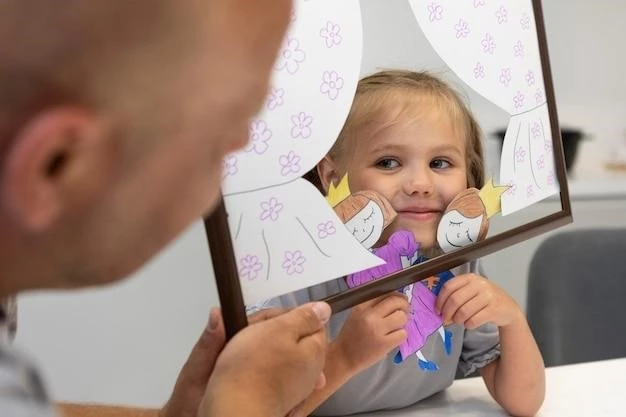Growth Deficiency Brachydactyly Unusual Facies
This article delves into a rare condition encompassing stunted growth‚ short fingers‚ and abnormal facial features․ Addressing the genetic underpinnings‚ diagnostic methods‚ treatment options‚ and the overall impact on individuals living with the disorder․
Introduction
Welcome to an exploration of a rare medical condition known as Growth Deficiency Brachydactyly Unusual Facies․ This disorder‚ characterized by stunted growth‚ short fingers‚ and abnormal facial features‚ falls under the umbrella of dwarfism․ Individuals affected by this rare condition face unique challenges resulting from the physical traits associated with it․ Throughout this article‚ we will delve into the intricacies surrounding this rare condition‚ shedding light on its genetic origins‚ diagnosis‚ symptoms‚ treatment modalities‚ prognosis‚ as well as advancements in research․ By gaining a comprehensive understanding of Growth Deficiency Brachydactyly Unusual Facies‚ we aim to provide valuable insights for patients‚ families‚ healthcare professionals‚ and the broader community․ Join us on this journey to explore the complexities of this disorder and enhance awareness and knowledge surrounding it․

Understanding Dwarfism
Dwarfism is a medical condition characterized by short stature and body proportions that are unusually small․ Growth Deficiency Brachydactyly Unusual Facies is a specific form of dwarfism that presents with additional physical abnormalities like short fingers and distinct facial features․ The term ″dwarfism″ encompasses a range of conditions with varying causes‚ including genetic mutations‚ hormonal imbalances‚ and nutritional deficiencies․ While dwarfism may impact an individual’s physical stature‚ it is essential to note that it does not affect intellectual capabilities․ Understanding the complexities of dwarfism involves recognizing the diverse forms it can take and the associated challenges individuals may encounter․ By exploring the unique features of Growth Deficiency Brachydactyly Unusual Facies within the broader context of dwarfism‚ we aim to deepen awareness and knowledge about this rare condition and its impact on affected individuals․
Medical Condition Explanation
Growth Deficiency Brachydactyly Unusual Facies is a rare genetic disorder characterized by a combination of stunted growth‚ short fingers (brachydactyly)‚ and distinctive facial features․ The abnormal facial characteristics may include a prominent forehead‚ a flattened nasal bridge‚ and widely spaced eyes․ This condition falls under the spectrum of dwarfism‚ affecting the skeletal structure and overall physical appearance of affected individuals․ The underlying genetic mutations associated with Growth Deficiency Brachydactyly Unusual Facies disrupt normal growth processes‚ resulting in the manifestation of these physical traits․ Understanding the medical nuances of this disorder involves exploring how these genetic changes impact skeletal development and facial structures․ By unraveling the intricacies of Growth Deficiency Brachydactyly Unusual Facies at a molecular level‚ healthcare professionals can better diagnose‚ manage‚ and support individuals living with this rare condition․
Genetics of the Disorder
The genetic basis of Growth Deficiency Brachydactyly Unusual Facies lies in specific mutations that affect the normal development of skeletal and facial structures․ These mutations can occur in various genes responsible for growth regulation and skeletal formation․ In some cases‚ the disorder may be inherited in an autosomal dominant pattern‚ meaning that an affected individual has a 50% chance of passing the mutated gene to their offspring․ However‚ sporadic mutations can also give rise to this rare condition without a family history․ Understanding the precise genetic alterations associated with Growth Deficiency Brachydactyly Unusual Facies is crucial for accurate diagnosis‚ genetic counseling‚ and potential future therapeutic interventions․ Advances in genetic research provide insights into the molecular mechanisms underlying this disorder‚ paving the way for targeted treatments and improved care strategies for individuals affected by this rare genetic condition․
Diagnosis and Symptoms
Diagnosing Growth Deficiency Brachydactyly Unusual Facies involves a comprehensive evaluation of physical traits and genetic testing to identify specific mutations associated with the disorder․ Common symptoms include below-average height‚ short fingers‚ a prominent forehead‚ flattened nasal bridge‚ and widely spaced eyes․ These distinctive facial features often serve as key indicators for physicians when considering a diagnosis of this rare condition․ Additionally‚ imaging studies and skeletal assessments may be utilized to assess bone development and confirm the presence of characteristic skeletal abnormalities․ A multidisciplinary approach involving geneticists‚ endocrinologists‚ and orthopedic specialists is typically crucial for an accurate diagnosis and tailored management plan․ By recognizing the hallmark symptoms and utilizing advanced diagnostic techniques‚ healthcare providers can efficiently identify and support individuals affected by Growth Deficiency Brachydactyly Unusual Facies․
Treatment Options
The management of Growth Deficiency Brachydactyly Unusual Facies focuses on addressing the physical implications of the disorder and improving the quality of life for affected individuals․ While there is no cure for the underlying genetic condition‚ treatment strategies aim to alleviate symptoms and provide necessary support․ Orthopedic interventions may be recommended to manage skeletal abnormalities and address functional limitations․ Hormone therapies could be utilized to support growth and development‚ depending on individual needs and hormonal levels․ Additionally‚ supportive therapies such as physical rehabilitation and occupational therapy can enhance mobility and independence․ Regular monitoring by a multidisciplinary team of healthcare professionals is essential to track growth progress‚ manage associated health issues‚ and adjust treatment plans accordingly․ By implementing a tailored and holistic approach to care‚ individuals with Growth Deficiency Brachydactyly Unusual Facies can optimize their well-being and navigate the challenges posed by this rare condition․
Prognosis and Outlook
The prognosis for individuals with Growth Deficiency Brachydactyly Unusual Facies depends on the specific manifestations of the disorder‚ the underlying genetic mutations‚ and the management strategies employed․ While this rare condition presents challenges related to physical growth and skeletal development‚ advancements in medical knowledge and treatment modalities offer improved outcomes and quality of life for affected individuals․ With early diagnosis‚ appropriate medical interventions‚ and comprehensive care‚ many individuals can lead fulfilling lives and effectively manage the symptoms associated with the disorder․ Regular monitoring‚ supportive therapies‚ and a proactive approach to addressing potential complications can significantly impact the long-term prognosis․ By focusing on personalized care plans and ongoing support‚ healthcare providers can optimize the outlook for individuals living with Growth Deficiency Brachydactyly Unusual Facies and empower them to thrive despite the challenges posed by this rare genetic condition․
Research and Advancements
Ongoing research initiatives focused on Growth Deficiency Brachydactyly Unusual Facies are propelling advancements in understanding the genetic mechanisms underlying this rare disorder․ Genetic studies and molecular investigations are uncovering key mutations that contribute to the development of characteristic physical traits associated with the condition․ Collaborative efforts between researchers‚ clinicians‚ and geneticists are leading to innovative diagnostic tools and targeted treatment approaches tailored to the specific genetic profiles of affected individuals․ Furthermore‚ advancements in gene therapy and precision medicine hold promise for potential therapeutic interventions that could address the root cause of Growth Deficiency Brachydactyly Unusual Facies at a molecular level․ By staying at the forefront of scientific developments and embracing novel technologies‚ the medical community endeavors to enhance knowledge‚ improve diagnostic capabilities‚ and ultimately enhance the quality of care and treatment options available to individuals affected by this rare genetic condition․
Living with the Disorder
Individuals affected by Growth Deficiency Brachydactyly Unusual Facies navigate unique challenges associated with the physical traits and medical complexities of this rare genetic condition․ Living with the disorder requires a multidimensional approach that encompasses physical‚ emotional‚ and social aspects of well-being․ From managing daily activities to addressing healthcare needs and accessing specialized support services‚ individuals and their families may encounter various hurdles․ Coping with the impact of Growth Deficiency Brachydactyly Unusual Facies often involves fostering resilience‚ seeking guidance from healthcare professionals‚ connecting with support groups‚ and embracing assistive technologies when necessary․ By promoting a holistic and patient-centered approach to care‚ individuals with this rare disorder can enhance their quality of life‚ cultivate a sense of empowerment‚ and overcome obstacles with strength and determination‚ embodying the spirit of resilience in the face of adversity․
Prevention and Genetic Counseling
Preventing Growth Deficiency Brachydactyly Unusual Facies primarily involves genetic counseling for individuals and families at risk of inheriting this rare disorder․ Genetic counselors play a pivotal role in providing information‚ support‚ and guidance regarding the likelihood of passing on the mutated genes associated with the condition․ Through comprehensive genetic testing and family history assessments‚ potential carriers can make informed decisions about family planning‚ reproductive options‚ and the implications of genetic inheritance․ Moreover‚ early identification of genetic mutations through preconception or prenatal genetic counseling can empower individuals to understand the risks‚ explore available interventions‚ and plan for the future accordingly․ By promoting proactive genetic counseling services and raising awareness about the hereditary nature of Growth Deficiency Brachydactyly Unusual Facies‚ healthcare professionals aim to equip individuals with valuable knowledge and resources to make informed choices and mitigate the risk of passing on this rare genetic condition to future generations․
Case Studies and Real-Life Experiences
Examining case studies and real-life experiences of individuals living with Growth Deficiency Brachydactyly Unusual Facies provides valuable insights into the challenges and triumphs associated with this rare genetic condition․ These narratives offer a personalized perspective on the impact of the disorder on daily life‚ relationships‚ and overall well-being․ By sharing stories of resilience‚ adaptation‚ and perseverance‚ individuals affected by this condition can inspire others‚ foster understanding within the community‚ and advocate for greater awareness and support․ Moreover‚ case studies serve as important educational tools for healthcare providers‚ researchers‚ and policymakers‚ highlighting the diverse manifestations of the disorder and the multidisciplinary approach required for effective management and care․ Real-life experiences offer a humanizing lens through which to view Growth Deficiency Brachydactyly Unusual Facies‚ promoting empathy‚ empowerment‚ and a deeper understanding of the lived realities of those navigating the challenges posed by this rare genetic condition․
Awareness and Advocacy
Enhancing awareness and advocacy for individuals with Growth Deficiency Brachydactyly Unusual Facies is crucial in promoting understanding‚ acceptance‚ and support within the broader community․ Advocacy efforts aim to amplify the voices of affected individuals‚ raise visibility for rare genetic conditions‚ and advocate for improved resources‚ research‚ and healthcare services․ By participating in awareness campaigns‚ educational initiatives‚ and outreach programs‚ advocates can destigmatize the condition‚ challenge misconceptions‚ and foster inclusivity and empathy․ Furthermore‚ advocating for equitable access to healthcare‚ specialized interventions‚ and support services can enhance the quality of life for individuals living with Growth Deficiency Brachydactyly Unusual Facies and their families․ Through collaborative advocacy efforts‚ stakeholders can work together to effect positive change‚ promote social inclusion‚ and advance the rights and well-being of individuals affected by this rare genetic condition․
Conclusion
In conclusion‚ Growth Deficiency Brachydactyly Unusual Facies represents a rare genetic condition characterized by stunted growth‚ short fingers‚ and distinctive facial features․ Understanding the genetic underpinnings‚ diagnosis‚ treatment options‚ and the implications of living with this disorder is paramount in providing comprehensive care and support for affected individuals; Ongoing research and advancements in genetic therapies offer hope for improved management strategies and better outcomes for those affected by this condition․ By fostering awareness‚ advocating for inclusive policies‚ and promoting genetic counseling‚ we can empower individuals and families to navigate the challenges posed by Growth Deficiency Brachydactyly Unusual Facies with resilience and dignity․ Through a collaborative and holistic approach to care‚ we strive to enhance the quality of life and well-being of individuals impacted by this rare genetic disorder․
